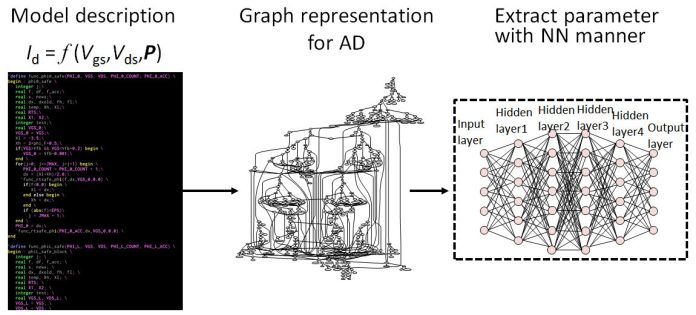Scientists from the Nara Institute of Science and Technology (NAIST) used the mathematical method called automatic differentiation to find the optimal fit of experimental data up to four times faster. This research can be applied to multivariable models of electronic devices, which may allow them to be designed with increased performance while consuming less power. Wide bandgap devices, such as silicon carbide (SiC) metal-oxide semiconductor field-effect transistors (MOSFET), are a critical element for making converters faster and more sustainable. This is because of their larger switching frequencies with smaller energy losses under a wide range of temperatures when compared with conventional silicon-based devices. However, calculating the parameters that determine how the electrical current in a MOSFET responds as a function of the applied voltage remains difficult in a circuit simulation. A better approach for fitting experimental data to extract the important parameters would provide chip manufacturers the ability to design more efficient power converters.
Now, a team of scientists led by NAIST has successfully used the mathematical method called automatic differentiation (AD) to significantly accelerate these calculations. While AD has been used extensively when training artificial neural networks, the current project extends its application into the area of model parameter extraction. For problems involving many variables, the task of minimizing the error is often accomplished by a process of “gradient descent,” in which an initial guess is repeatedly refined by making small adjustments in the direction that reduces the error the quickest. This is where AD can be much faster than previous alternatives, such as symbolic or numerical differentiation, at finding direction with the steepest “slope”. AD breaks down the problem into combinations of basic arithmetic operations, each of which only needs to be done once. “With AD, the partial derivatives with respect to each of the input parameters are obtained simultaneously, so there is no need to repeat the model evaluation for each parameter,” first researcher Michihiro Shintani says. By contrast, symbolic differentiation provides exact solutions, but uses a large amount of time and computational resources as the problem becomes more complex.
To show the effectiveness of this method, the team applied it to experimental data collected from a commercially available SiC MOSFET. “Our approach reduced the computation time by 3.5× in comparison to the conventional numerical-differentiation method, which is close to the maximum improvement theoretically possible,” Shintani says. This method can be readily applied in many other areas of research involving multiple variables, since it preserves the physical meanings of the model parameters. The application of AD for the enhanced extraction of model parameters will support new advances in MOSFET development and improved manufacturing yields.








